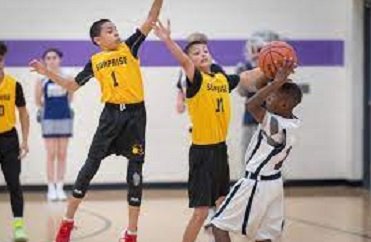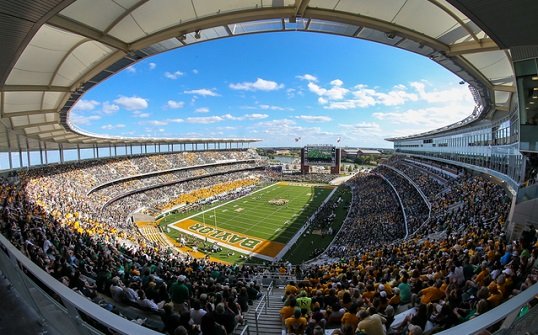A junior high basketball game generally consists of four quarters, each lasting six to eight minutes, depending on the league or school district’s rules. Typically, the quarters are six minutes long. Between the first and second quarters and the third and fourth quarters, there are short breaks of about one to two minutes. Halftime usually lasts around 10 minutes. Including these breaks, the total duration of a junior high basketball game is approximately 60 to 75 minutes. If the game is tied at the end of regulation time, overtime periods of three or four minutes are played. This structure ensures a manageable length of play for younger athletes while allowing for adequate breaks and maintaining the flow of the game
Understanding Junior High Basketball Game Duration
A junior high basketball game typically lasts around 60 to 75 minutes. The game consists of four quarters, each six to eight minutes long, with one to two-minute breaks between quarters and a 10-minute halftime. If the game is tied, overtime periods of three to four minutes are played. This structure balances playtime with adequate breaks for young athletes.
Quarter Lengths
Junior high basketball games have four quarters, each lasting six to eight minutes, depending on the league’s rules. This ensures manageable playtime for young athletes.
Halftime Duration
junior high basketball games, halftime typically lasts around 10 minutes. This break allows players to rest, receive coaching instructions, and prepare for the second half of the game. The duration helps maintain the game’s flow while ensuring adequate rest for young athletes
Overtime Rules
In junior high basketball, if the game is tied at the end of regulation, overtime periods are played to determine the winner. Each overtime period typically lasts three to four minutes. The number of overtime periods can vary based on league rules, but they continue until a winner is determined. The structure ensures a fair opportunity to break the tie while maintaining a manageable duration for young athletes.
Timeouts and Delays
In junior high basketball, timeouts and delays are managed to maintain the game’s flow while providing necessary breaks for strategy and rest. Each team is usually allotted a set number of timeouts per game, often three to five. These can include both 30-second and full timeouts, typically lasting one minute.
Timeouts are strategically used by coaches to make adjustments, provide rest, and address any issues. Additionally, there are brief delays between quarters (one to two minutes) and a longer halftime break (about 10 minutes).
If there are injuries or other stoppages, the game clock is paused until play can safely resume. This ensures player safety and allows the game to proceed smoothly. Overall, the structure of timeouts and delays balances the need for breaks with maintaining the rhythm and excitement of the game.
Comparative Lengths Across Divisions
High school basketball games consist of four quarters, each 8 minutes long, with a 10 to 15-minute halftime. The total game time is approximately 90 minutes. This structure is designed to accommodate the players’ higher skill level and endurance compared to junior high, while still maintaining a manageable length for young athletes.
College basketball games vary slightly between men’s and women’s divisions:
Men’s games have two 20-minute halves, totaling 40 minutes of play time.
Women’s games consist of four 10-minute quarters, with a 15-minute halftime break.
Professional Basketball the NBA, games consist of four quarters, each lasting 12 minutes, with a 15-minute halftime break, totaling approximately 2 to 2.5 hours. In the WNBA, games have four quarters, each lasting 10 minutes, with a 15-minute halftime break, also totaling about 2 hours. These structures accommodate professional-level play and viewer engagement across both leagues
Impact of Game Length on Players
The length of basketball games directly impacts players’ physical endurance, strategic planning, and overall performance, requiring stamina and mental focus throughout the game.
Infamous Extremes in Basketball Game Lengths
In basketball, notable extremes in game lengths highlight unique circumstances or historical events:
NCAA Men’s Basketball:
- Longest Game: The longest NCAA Division I men’s basketball game occurred on December 21, 1981, between Cincinnati and Bradley. It lasted seven overtimes, totaling 75 minutes of overtime play in addition to regulation time.
- Impact: This game underscored the physical and mental endurance required at high levels of competition, setting a record for the most overtime periods in NCAA Division I history.
NBA and WNBA:
- Shortened Games: Due to unforeseen circumstances such as power outages or weather-related delays, some NBA and WNBA games have been shortened or postponed.
- In March 2019, a game between the Sacramento Kings and Dallas Mavericks was postponed after a significant delay due to a condensation issue on the court, resulting in a shortened game duration.
Impact: Such incidents emphasize the logistical challenges in maintaining game integrity and player safety under unusual conditions.
International Basketball:
- Unique Formats: International basketball competitions, such as the Olympics or FIBA World Cup, sometimes feature different game formats or regulations compared to regular league play.
- Example: The Olympics often utilize a single-elimination format, where each game’s outcome directly influences medal standings, leading to intense and potentially extended matches.
- Impact: These tournaments highlight the global diversity in basketball rules and the adaptation required by players and teams to compete effectively.
These examples illustrate how game lengths can vary significantly due to both planned and unplanned circumstances, influencing player performance and the overall spectator experience in basketball.
What is the typical duration of a junior high school basketball match?
A typical junior high school basketball game lasts approximately 60 to 75 minutes, including four quarters of six to eight minutes each, halftime, and short breaks between quarters.
How many quarters are there in a junior high basketball game, and how long is each?
A junior high basketball game consists of four quarters. Each quarter typically lasts between six to eight minutes, allowing for a manageable game length suitable for younger players.
What is the total number of minutes played in a junior high basketball game?
junior high basketball game, the total playing time typically ranges from 24 to 32 minutes, depending on the length of each quarter, which is usually 6 to 8 minutes.
Does the length of a junior high basketball game vary by state or region?
es, the length of junior high basketball games can vary by state or region based on local league or association rules. Typically, variations can occur in quarter length and total game duration, reflecting regional preferences and competitive standards.
What are the common time allowances for breaks and halftime in junior high basketball?
In junior high basketball, common time allowances include short breaks of about one to two minutes between quarters and a halftime break typically lasting around 10 minutes. These breaks allow for rest, strategy adjustments, and player hydration during the game.





